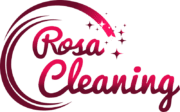Purpose
This guidance provides recommendations on the cleaning and disinfection of households where persons under investigation (PUI) or those with confirmed COVID-19 reside or may be in self- isolation. It is aimed at limiting the survival of the virus in the environments. These recommendations will be updated if additional information becomes available.
These guidelines are focused on household settings and are meant for the general public.
- Cleaning refers to the removal of germs, dirt, and impurities from surfaces. It does not kill germs, but by removing them, it lowers their numbers and the risk of spreading infection.
- Disinfecting refers to using chemicals, for example, EPA-registered disinfectants, to kill germs on surfaces. This process does not necessarily clean dirty surfaces or remove germs, but by killing germs on a surface after cleaning, it can further lower the risk of spreading infection.
Hand hygiene and other preventive measures
- Household members should clean hands often, including immediately after removing gloves and after contact with an ill person, by washing hands with soap and water for 20 seconds. If soap and water are not available and hands are not visibly dirty, an alcohol-based hand sanitizer that contains at least 60% alcohol may be used. However, if hands are visibly dirty, always wash hands with soap and water.
Always read and follow the directions on the label to ensure safe and effective use.
- Keep hand sanitizers away from fire or flame
- For children under six years of age, hand sanitizer should be used with adult supervision
- Always store hand sanitizer out of reach of children and pets
See FDA’s Tips for Safe Sanitizer Useexternal icon and CDC’s Hand Sanitizer Use Considerations
- Household members should follow normal preventive actions while at work and home including recommended hand hygiene and avoiding touching eyes, nose, or mouth with unwashed hands.
- Additional key times to clean hands include:
- After blowing one’s nose, coughing, or sneezing
- After using the restroom
- Before eating or preparing food
- After contact with animals or pets
- Before and after providing routine care for another person who needs assistance (e.g. a child)
- Additional key times to clean hands include:
Other considerations
- The ill person should eat/be fed in their room if possible. Non-disposable food service items used should be handled with gloves and washed with hot water or in a dishwasher. Clean hands after handling used food service items.
- If possible, dedicate a lined trash can for the ill person. Use gloves when removing garbage bags, handling, and disposing of trash. Wash hands after handling or disposing of trash.
- Consider consulting with your local health department about trash disposal guidance if available.
